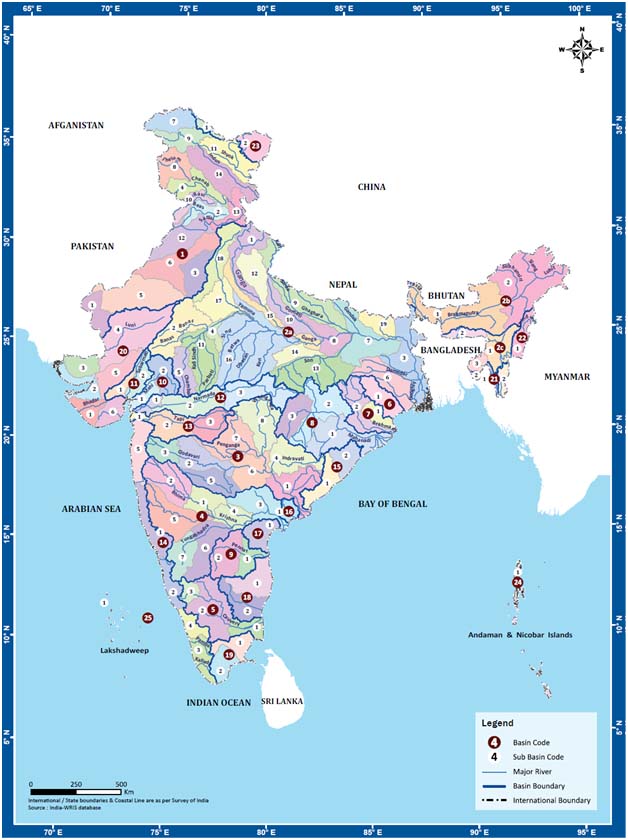Rivers
Save Ganga and Save Himalayas - Meeting cum panel discussion - Save Ganga Movement, New Delhi, March 12, 2013
Posted on 28 Feb, 2013 10:46 PMOrganizers
Venue
Even as Maharashtra faces acute water scarcity, a green, lush village in the heart of Marathawada stands water rich and drought proof- Roundup of the week’s news (February 18-24, 2013)
Posted on 25 Feb, 2013 04:00 PMA green oasis amidst despair and drought hit Maharastra
Dealing with arsenic in rural Bihar - Evaluating the successes and failures of mitigation projects
Posted on 21 Feb, 2013 11:51 PMArticle Courtesy: Delft University of Technology
Author(s): Matthijs Brouns, Merijn Janssen, Andrew Wong
Rights of adivasis over forest lands diminishes; their consent no longer mandatory for all development projects taken up on forest land - Roundup of the week’s news (February 11-17, 2013)
Posted on 18 Feb, 2013 11:18 PMAdivasis' rights over forest lands diminishes
Assessing the land use change and its impact on water resources: A study on the Mula and Mutha rivers catchment area in Pune
Posted on 17 Feb, 2013 09:11 PMLand use changes hydrologic system and have potentially large impacts on water resources. An assessment in an area with seasonally limited water availability and which is subject to rapid socio- economic development and population growth will provide an exemplary view on the local impacts of major recent developments in India. In this backdrop this paper analyzes past land use changes between 1989 and 2009 and their impacts on the water balance in the Mula and Mutha Rivers catchment upstream of Pune. The aim of the paper is:
- assess the land use changes between 1989/1990 and 2009/2010
- analyze the impacts of these changes on the long-term water balance components in the Mula and Mutha Rivers catchment upstream of the city of Pune.
Handbook for flood protection, anti-erosion and river training works by Central Water Commission (2012)
Posted on 13 Feb, 2013 09:43 PMThis handbook by Central Water Commission aims to provide necessary guidance to the field engineers in the state and central for design, appraisal, construction and monitoring of the flood management works covering all the relevant BIS codes, design manuals, guidelines, technical specifications for construction materials and practices etc. to meet new challenges in the flood management in India.
Book review: Governing international watercourses by Susanne Schmeier
Posted on 13 Feb, 2013 04:45 PMThis article presents a review of the book 'Governing international watercourses' by Susanne Schmeier - a book that has been called 'a stunning piece of work' by Aaron T. Wolf. The author examines the river basin organisation as a key institution for managing international watercourses. The book follows a three-part structure of developing theory, refining it, and then discussing three case studies. By emphasizing that more trans-boundary events are focused on cooperation rather than on conflict- with a far smaller percentage being violent conflict - it carries a message of hope.
Living rivers, dying rivers: Everything you wanted to know about rivers in India
Posted on 13 Feb, 2013 10:41 AMIn an attempt to join crucial debates surrounding the alarming increase in environmental degradation, especially of rivers and river systems, Prof. Ramaswamy Iyer, India’s foremost expert in the field conceived and carried forward a series of talks titled ‘Living Rivers, Dying Rivers’ with support of India International Centre.

River basin atlas of India – A report by Central Water Commission and Indian Space Research Organisation
Posted on 10 Feb, 2013 01:12 PMThis publication by the Central Water Commission (CWC) and Regional Remote Sensing Centre – West, Indian Space Research Organisation (ISRO) presents the status of water resources development in each of the river basins as per CWC classification. It was launched on November 1, 2012 by Minister of Water Resources Shri. Harish Rawat in a function organized at CWC, New Delhi.
This comprehensive publication gives detailed information of major water resources projects along with the location of all hydrological observation sites including major dams, barrages etc. in all the river basins of India.
This "River basin atlas of India", an outcome of joint project “Generation of Database and implementation of web enabled Water Resources Information System (India-WRIS) in the country”, is a publication by the Central Water Commission (CWC) and Regional Remote Sensing Centre – West, Indian Space Research Organisation (ISRO) that presents the status of water resources development in each of the river basins as per CWC classification. It was launched on November 1, 2012 by Minister of Water Resources Shri. Harish Rawat in a function organized at CWC, New Delhi.
This comprehensive publication gives detailed information of major water resources projects along with the location of all hydrological observation sites including major dams, barrages etc. in all the river basins of India. All these features have been portrayed on the maps with river network, major cities and terrain in background. The hydrological and Flood Forecasting observation sites of Central Water Commissions are also marked in the basin maps.

India-WRIS Sub-basins, Source: River basin atlas of India, CWC and ISRO, 2012
Performance of expert appraisal committee for river valley and hydroelectric projects from 2006-2012 - Analysis by South Asia Network on Dams, Rivers and People
Posted on 07 Feb, 2013 12:58 PMWhile developmental projects are beneficial for growth of an economy they do have negative impact on the environment. This impact varies significantly by project type, size and location. In order to identify, examine, assess and evaluate the probable impacts of a proposed project on the environment the Ministry of Environment & Forest (MoEF) in 2006, constituted different committees. The committees are called as Expert Appraisal Committees (EAC). An EAC committee on River Valley & Hydroelectric projects was also set up on these lines. In the backdrop this South Asia Network on Dams, Rivers and People (SANDARP) an informal network of organisation and individuals working on water issues has come up with an analysis on how have this committee performed till now? This document presents an analysis of the same.




